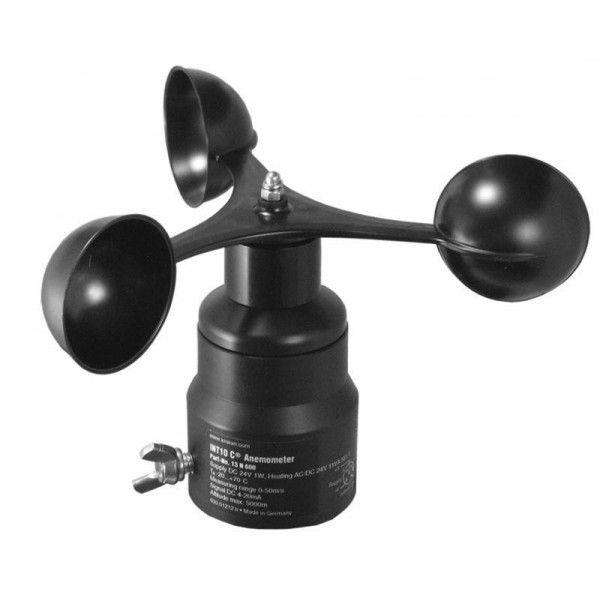How an Anemometer Can Enhance Your Weather Monitoring System
All You Need to Understand About Anemometers: Just How They Function, Why They Matter, and Where to Use Them
Anemometers, though often neglected in the realm of scientific instruments, play a vital function in numerous fields, offering important insights right into wind speed and airflow patterns. As we dig into the details of anemometer technology, we will certainly reveal the inner operations of these tools, their significance, and the key considerations when selecting the ideal anemometer for certain applications.

Anemometer Fundamentals
A vital tool utilized to determine wind rate and instructions, the anemometer plays a vital duty in meteorology and various industries. An anemometer typically is composed of 3 or 4 cups that revolve in the wind, a vane that aims right into the wind, and sensing units to track the motions or turnings.
There are numerous types of anemometers offered, including mug anemometers, vane anemometers, hot-wire anemometers, and sonic anemometers, each with its special functions and applications. Mug anemometers are generally used for fundamental wind rate dimensions, while vane anemometers are chosen for directional dimensions.
Concepts of Anemometer Procedure
Structure on the fundamental understanding of anemometer fundamentals, the concepts of anemometer operation elucidate the technicians behind wind rate and direction measurements. Anemometers operate the concept of air movement influencing a sensing unit, triggering it to rotate. Cup anemometers, as an example, have 3 or even more mugs that capture the wind, triggering them to rotate faster as the wind speed boosts. The rotation rate is then exchanged a wind speed measurement. Vane anemometers, on the other hand, use a tail or a probe that straightens itself with the wind direction, supplying a measurement of wind instructions based on the orientation of the sensing unit. Hot-wire anemometers count on a heated cord that cools down as wind passes over it, with the price of cooling down establishing the wind speed. Ultrasonic anemometers measure wind rate and direction by assessing the moment it considers ultrasonic signals to take a trip between transducers. Recognizing these principles is essential for reliable and precise wind dimensions in different applications.
Significance of Anemometers
The significance of anemometers in weather forecasting and various markets can not be overstated. Anemometers play an essential role in measuring wind speed and instructions, providing vital data for weather forecasting, environment studies, ecological tracking, and aviation operations. Meteorologists rely upon anemometers to collect exact wind data, assisting them comprehend weather patterns, predict tornados, and issue timely warnings to the public. In markets such as building, agriculture, renewable resource, and maritime procedures, anemometers are used to maximize processes, ensure safety, and enhance efficiency. For instance, wind ranch operators make use of anemometers to assess wind problems and make best use of power production from wind generators. In the maritime industry, anemometers help ship navigating by giving real-time wind details to captains, helping them make informed decisions to ensure risk-free voyages. Overall, anemometers are indispensable tools that contribute considerably to safety, performance, and notified decision-making in meteorology and a vast array of industries.
Applications Across Various Industries
Applications of anemometers cover across varied industries, showcasing their adaptability and look at here utility past meteorology. In the renewable power industry, anemometers play an essential duty in examining wind conditions for wind ranch positionings, making certain optimum power production. Industries like building and construction and mining make use of anemometers to check wind speeds, critical for safety and security protocols, specifically when operating at elevations or in open-pit mines where strong winds can present hazards. Anemometers are likewise indispensable in the air travel sector, aiding pilots in comprehending airspeed and wind instructions for safe take-offs and touchdowns. The maritime sector take advantage of anemometers for ship navigating, aiding sailors expect climate changes and change courses accordingly. In agriculture, anemometers help farmers in taking care of crop spraying by supplying real-time information on wind rate to avoid drift. Anemometers discover applications read this in A/c systems to maximize air movement and enhance energy effectiveness in buildings. The diverse use instances of anemometers emphasize their importance across various markets, highlighting their important duty in boosting functional safety and security and performance (anemometer).

Choosing the Right Anemometer for Your Requirements
Picking the appropriate anemometer tailored to your particular demands is crucial for obtaining accurate wind speed and direction measurements. When choosing an anemometer, consider factors such as the desired application, called for dimension array, ecological problems, and wanted attributes. For basic objectives, a mug anemometer appropriates for gauging wind rate, while a vane anemometer gives wind instructions information. Hot-wire anemometers are suitable for reduced airspeed measurements, and ultrasonic anemometers use high accuracy and longevity.

Verdict
In final thought, anemometers play a crucial function in gauging wind speed and direction throughout numerous industries. It is crucial to consider the value of anemometers in order to make enlightened decisions when choosing the most appropriate tool for gauging wind conditions.
There are various types of anemometers offered, consisting of mug anemometers, vane anemometers, hot-wire anemometers, and sonic anemometers, each with its unique features and applications. Cup anemometers are frequently made use of for standard wind rate dimensions, while vane anemometers are preferred for directional measurements. Hot-wire anemometers are suitable for low airspeeds, and sonic anemometers are suitable for high-precision dimensions in study and commercial setups.Structure on the fundamental understanding of anemometer basics, the principles of anemometer operation illuminate the auto mechanics behind wind rate and instructions dimensions. For general functions, a cup anemometer is suitable for determining wind speed, while a vane anemometer supplies wind direction data.